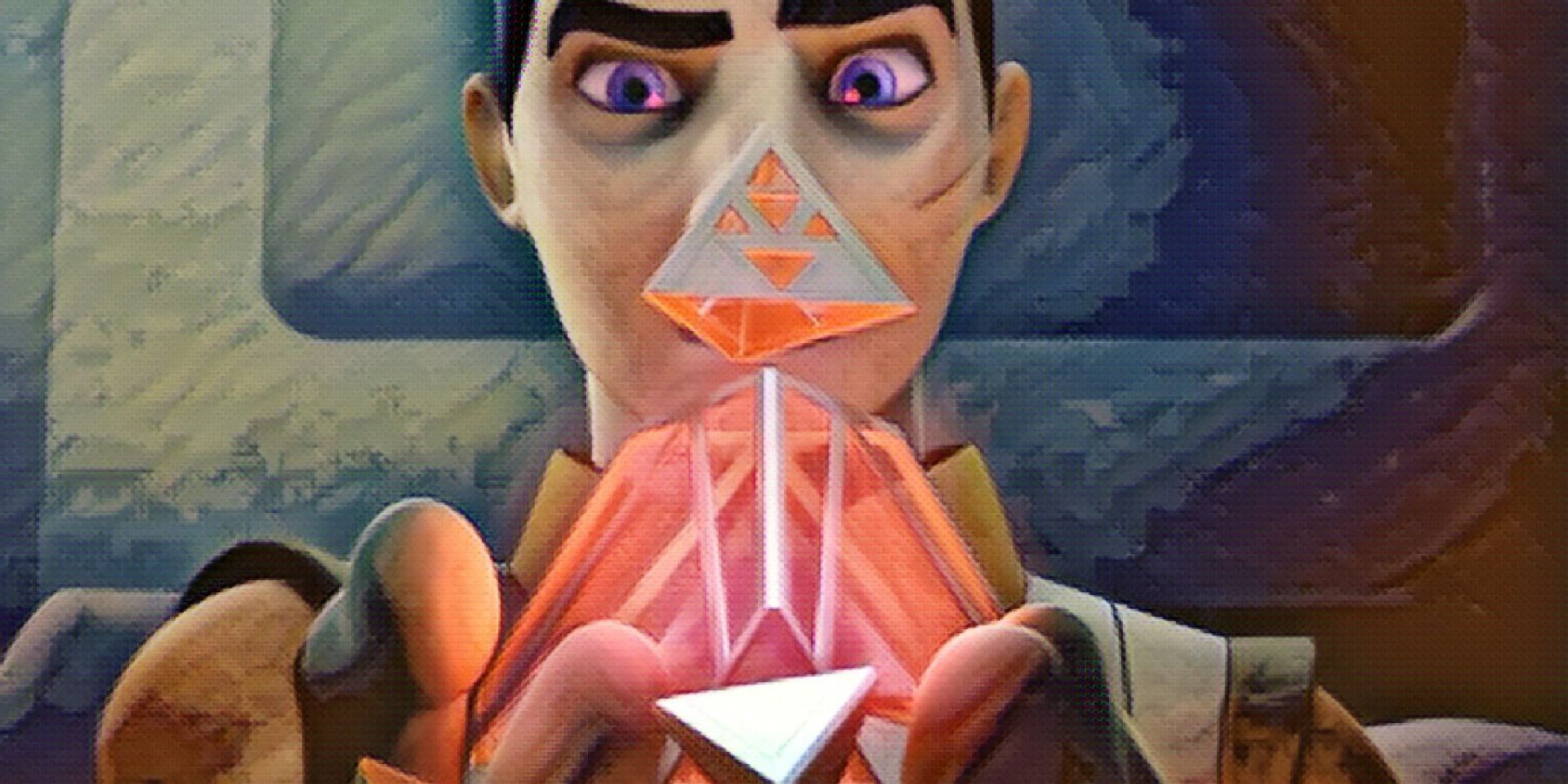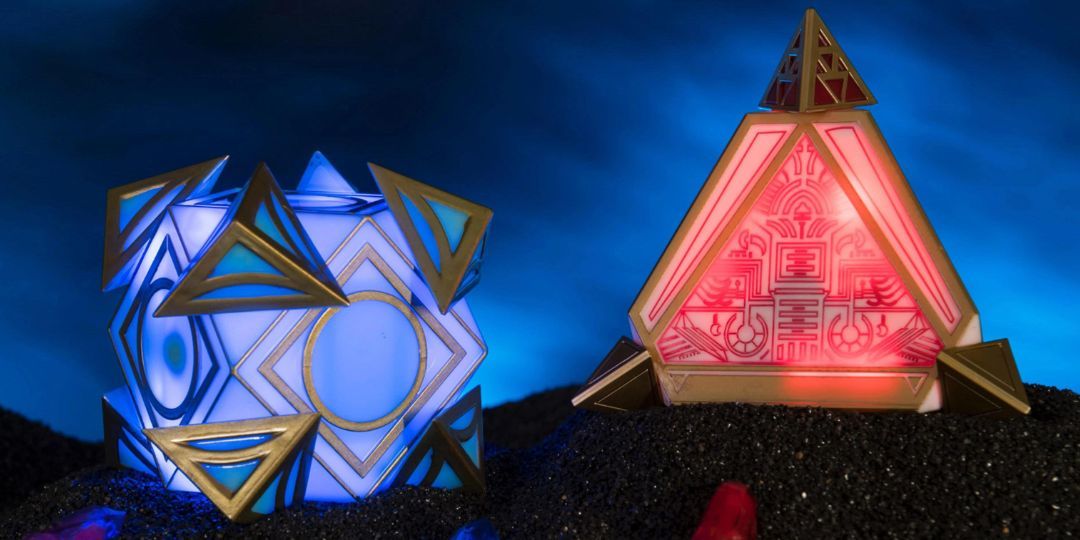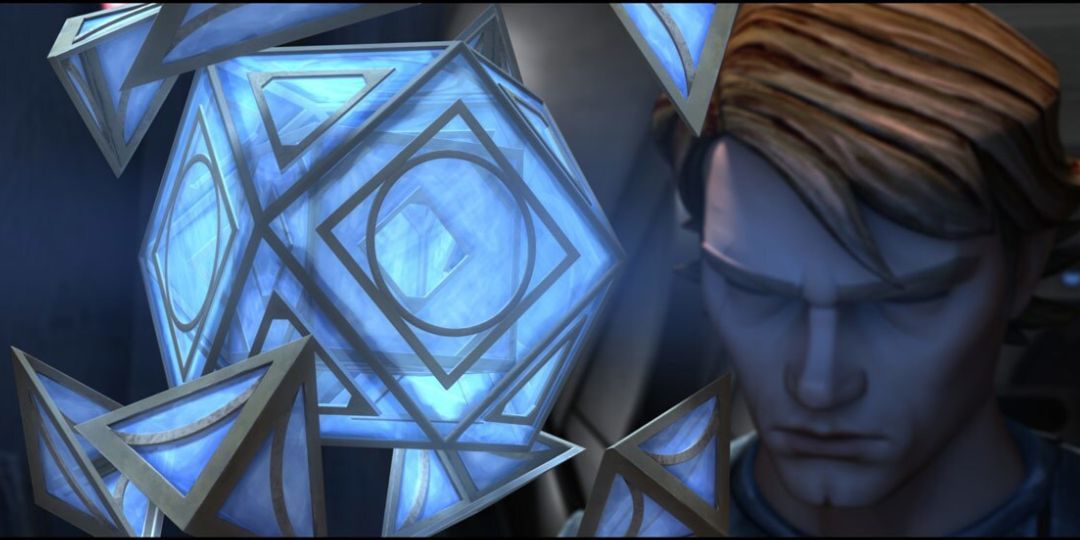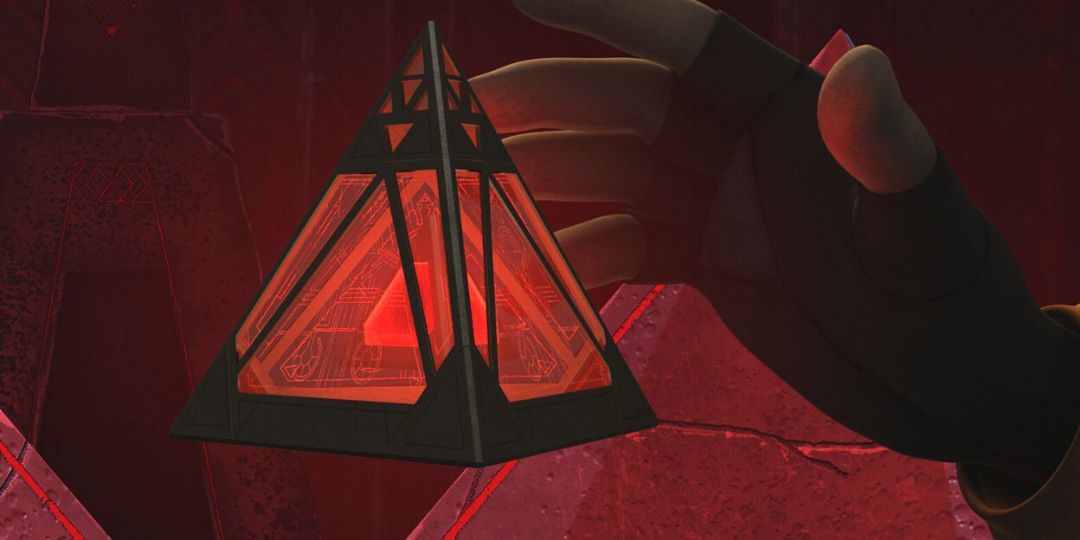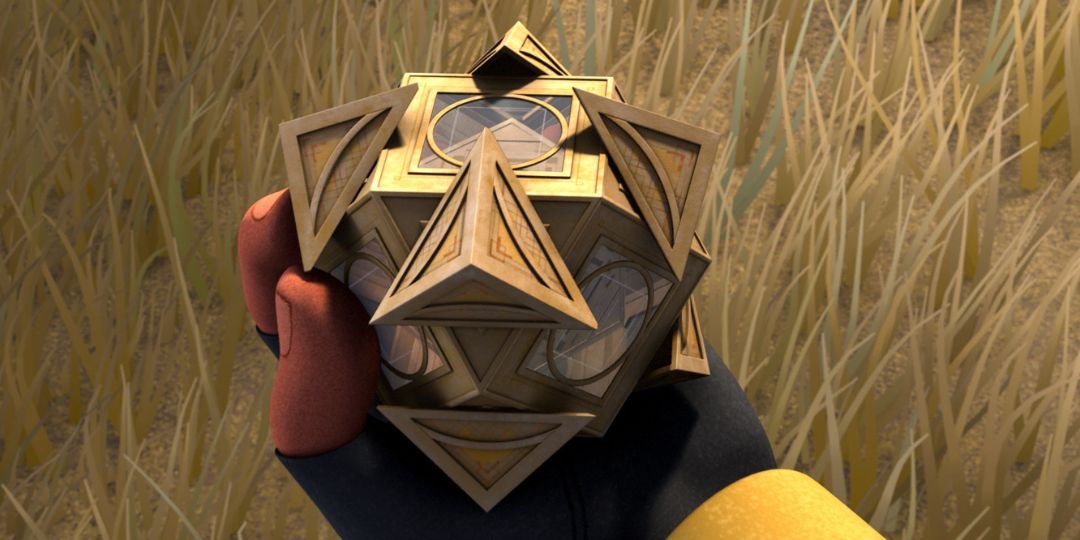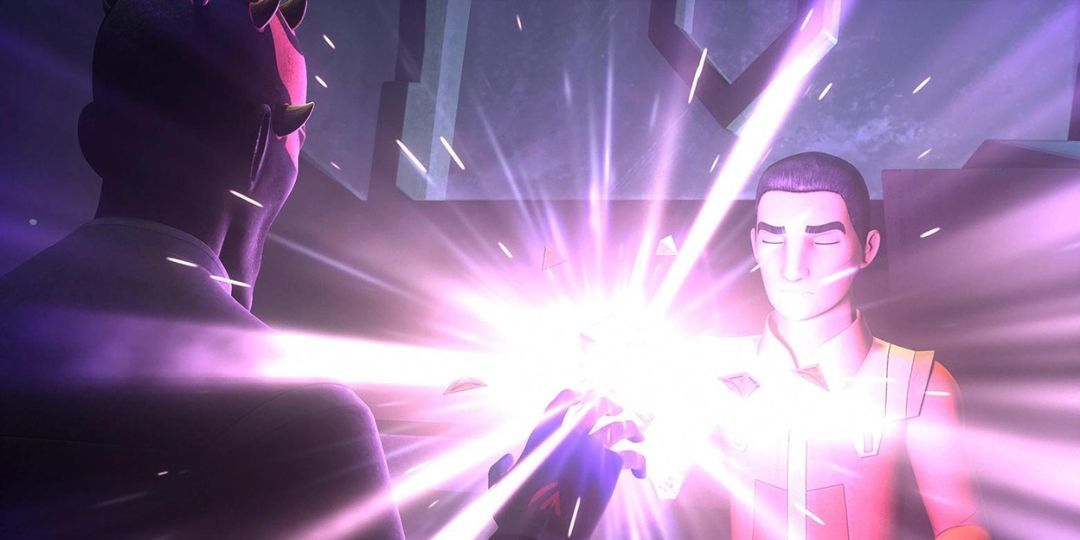Star Wars fans who are most familiar with the “Skywalker Saga” films might have come across a Jedi or Sith Holocron at Dok-Ondar’s Den of Antiquities, the shop on Baatu in Star Wars: Galaxy's Edge, and wondered, “What is that Jedi cube called?” That’s a fair question. Viewers familiar with Star Wars: The Clone Wars or Star Wars Rebels will certainly have a better idea of what makes a Holocron so special.
After making their first Canon appearance in the Season 2 premiere of the Clone Wars in 2009, the Holocron has become an intriguing object in Star Wars lore. Used by Jedi and Sith alike, Holocrons have already played instrumental roles in Star Wars stories — and will continue to do so as new series and films broaden fans’ knowledge of the galaxy far, far away.
What Is The Holocron Used For?
Holocrons are information storage devices, capable of holding ancient lessons or other valuable knowledge, which can be played back in the form of an interactive hologram. Capable of fitting in the palm of a human's hand, these pocket-sized polyhedrons are made of a crystalline material, and can only be opened by Force-sensitives. When opened, these repositories of wisdom can be manipulated physically; the mechanical parts move, allowing its users to access the stored knowledge.
According to Jedi Master Jocasta Nu, the Chief Librarian of the Jedi Archives during the age of the Galactic Republic, “Holocrons contain the most closely guarded secrets of the Jedi Order.” The same is true of Sith Holocrons, which contain cherished knowledge of the dark side. Given the practical and historical value of the Holocrons, they were often safeguarded in Sith and Jedi Temples.
Why Can Only Jedi Or Sith Open A Holocron?
Given the type of information concealed within a Holocron, it makes sense that the devices only react to Force-users. In fact, the earliest-known Holocrons were made by the Dai Bendu, a religious group that preceded the Jedi Order. The monks of the Dai Bendu believed in the benevolent presence of the Force in a united galaxy, and were, perhaps, more neutral in their approach to wielding the Force.
Containing their tracts, the Dai Bendu Holocrons were similar to the ones the Jedi and Sith would later construct, but they were more accessible, opening for even the least skilled Force-users. However, it seems the Jedi and Sith were interested in passing on their knowledge only to other light-side and dark-side adepts, respectively — hence the Force-related layer of security. As Jedi Master Luke Skywalker notes in The Rise of Kylo Ren comic series:
“Every holocron is unique, based on the teachings held inside. You have to hear what it's trying to tell you before it will open.”
Generally speaking, dark-side adepts were able to open Sith Holocrons, while light-side acolytes were able to access Jedi Holocrons. But that doesn’t mean a Force-user needs to be aligned with the Holocron’s side of the Force to access its information. Some Star Wars Legends material suggests that it would take a Jedi much willpower and focus to access a Sith Holocron, and that merely being in the presence of one could cause a Jedi to feel ill.
The Different Types Of Holocrons
In Star Wars Canon, there are three types of Holocrons. First, there are the original Holocrons — those made by the Dai Bendu. Taking inspiration from the Dai Bendu Holocrons are Jedi Holocrons, which take the form of crystalline cubes or dodecahedrons, and Sith Holocrons, which look like palm-sized pyramids or tetrahedrons. Because Jedi and Sith Holocrons can only be opened by the most adept Force-sensitives, a Holocron is a particularly secure way to pass down sensitive information, guarded wisdom, or grave secrets.
Much of what is known about Sith Holocrons is now considered Star Wars Legends content — put simply, non-canonical. Unlike a Jedi Holocron, a Sith Holocron often allowed its user to tap into an expansive repository of dark side information, no matter their rank. Creating a Sith Holocron, at least by Legends standards, was an intensive process. From gathering the rare materials to meditating on the will of the dark side, the process was a long and trying one.
Although not seen on screen, another type of Holocron was crafted by the props department during the production of Star Wars: Episode II — Attack of the Clones (2002). Included alongside the Jedi Holocron and Sith Holocron in the film’s accompanying visual dictionary, the so-called Great Holocron made its canonical debut in a 2015 reference book. A pentagonal dodecahedron with transparent crystal facets and a whole array of mechanical innards, the mysterious Great Holocron is affiliated with the Jedi Order.
How Many Jedi Holocron Are There?
Over the centuries preceding the age of the Galactic Republic, hundreds of Jedi holocrons were made. Countless were stored in the Jedi Archives on Coruscant, though, in some cases, the Jedi hunted down Sith Holocrons and stowed them away in the Archives, seemingly to keep them from being accessed by dark side adepts.
Given that they were kept in the Jedi Temple on Coruscant, most Holocrons were lost after the Empire’s Great Jedi Purge. And, along with the Holocrons themselves went the knowledge of how to make them, meaning that the relics are extremely rare during the age of the rebellion and onwards.
Are Holocrons Sentient?
Although Star Wars Legends was much more detailed when it came to describing Holocrons, what fans do know for certain about their Canon counterparts aligns closely. So, while Canon hasn’t addressed certain aspects of the Jedi and Sith Holocrons in detail, the logical conclusion is that the nature of the Holocrons remains virtually the same between Legends and Canon.
Created and accessed by making an impression through the Force, Holocrons and their crystal structures can clearly channel the force, not unlike the Kyber crystals in a lightsaber. In some instances, Jedi Holocrons can detect a Force adept’s level of skill, barring them from information that’s above their station. Clearly, there is some level of intelligence, though that intelligence is integrated into the design of the object. While Holocrons are not sentient, they are imbued with the Force, allowing for nuanced interactions with Force-users.
As seen in Star Wars Rebels, if a Jedi Holocron and a Sith Holocron are opened in tandem by a light side adept and a dark side adept, they can fuse together and provide answers to the Force users’ questions. When Jedi Padawan Ezra Bridger and former Sith Lord Maul combine their respective Holocrons, the devices point them toward Tatooine. For Ezra, this leads to him meeting Jedi Master Obi-Wan Kenobi for the first time. For Maul, this pushes him toward a fateful rematch with his long-standing nemesis.
The Difference Between A Wayfinder And A Holocron
When the often-criticized Episode IX — The Rise of Skywalker released, fans were upset by a lot of the filmmakers’ choices, which were considered both rushed and inconsistent. Those inconsistencies weren’t just apparent when comparing The Rise of Skywalker to the story beats set up in The Last Jedi, but to other parts of the Star Wars Canon, too. A great example? The introduction of a Sith Wayfinder, which helps the characters locate Exogol.
Given its familiar look, the Wayfinder had many fans wondering why filmmakers didn’t introduce a Sith Holocron instead. The movie’s accompanying visual dictionary tried to explain away the controversy. So, what’s the difference between a Wayfinder and a Holocron? Think of it this way: Holocrons are akin to books — repositories of knowledge, lessons, and other vital bits of information. Meanwhile, Wayfinders function like compasses or partial maps, guiding users to specific locations based on the data stored within them.
Based on what Canon says about hyperspace travel, Jedi were some of the galaxy’s first-known “wayfinders,” who explored the stars — and traveled hyperspace — using their Force-enhanced instincts. While a starship’s hyperdrive allows a traveler to access hyperspace lanes and cross great distances, the navigational tools available in the eras fans are most familiar with evolved over time, meaning Wayfinders likely once served a greater purpose. Based on the way Star Wars stories have been evolving, fans will likely see more of both Wayfinders and Holocrons in future shows and films.

